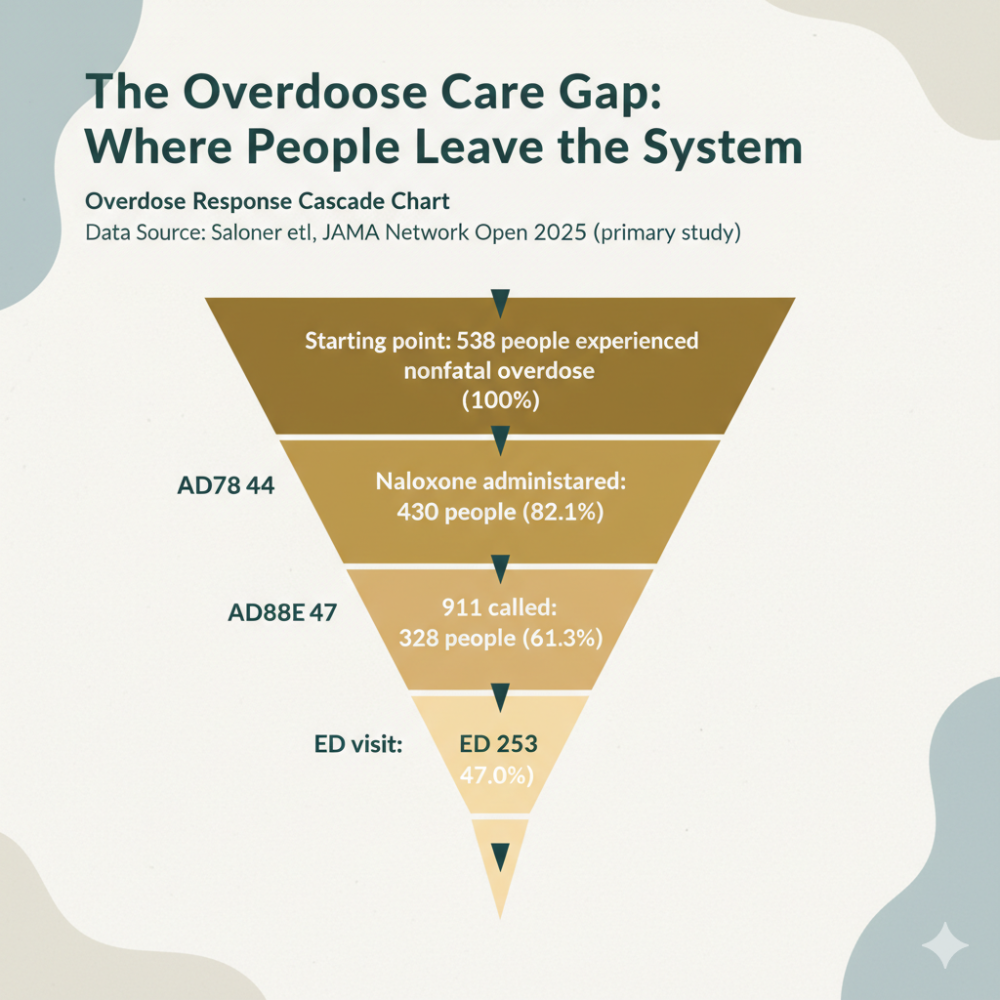Understanding the Evolving Fentanyl Crisis
The landscape of addiction in America has fundamentally transformed. What began as a prescription opioid crisis has evolved into something far more complex and dangerous: an epidemic driven by illicitly manufactured fentanyl that’s claiming more lives than ever before.
An article from penn live [6] led to reading some of the recent stats around fentanyl. While the poll mentioned included less than 2,000 people, the amount that admitted to fentanyl use is surprising.
The Hidden Scale of the Crisis
Recent research has revealed a sobering truth about the scope of fentanyl use in America. New national survey data shows that 11% of American adults reported using illicit opioids in the past year, with 7.5% specifically using illicitly manufactured fentanyl. [1] These numbers are dramatically higher—more than twenty times greater—than previous federal estimates, suggesting that the true scale of this crisis has been vastly underestimated.
This isn’t just a statistical discrepancy; it’s a wake-up call that our current methods for tracking and responding to opioid misuse are fundamentally inadequate.
Why Fentanyl Has Changed Everything
Fentanyl presents unique challenges that distinguish it from the prescription opioid crisis of the past:
Extreme Potency: Fentanyl is approximately 50 times more potent than heroin, making even tiny amounts potentially lethal.
Widespread Contamination: The drug has become ubiquitous in the illicit drug supply, often mixed into heroin, cocaine, methamphetamine, and counterfeit pills without users’ knowledge.
Unintentional Exposure: Nearly one-third of those who used illicit fentanyl in the past year did so without intending to, highlighting how unpredictable and pervasive this threat has become.
Economic Accessibility: Its low cost and high potency make it attractive to traffickers, leading to widespread distribution.
The Human and Economic Toll
The statistics paint a devastating picture. More than 74,000 Americans lost their lives to opioid overdoses last year alone, with fentanyl implicated in the vast majority of cases. The economic impact reached an estimated $2.7 trillion in 2023, but the true cost cannot be measured in dollars—it’s reflected in the countless families and communities torn apart by this crisis.
A New Framework for Treatment and Recovery
The evolving nature of the fentanyl crisis demands equally evolved treatment approaches, some of the approaches that advocates suggest include:
Real-Time Data and Adaptive Strategies
Traditional tracking methods are too slow for the rapidly changing landscape of synthetic opioids. Healthcare providers and treatment centers need access to current, accurate data to deploy interventions effectively.
Expanded Access to Evidence-Based Treatment
Medication-assisted treatment (MAT) using medications like buprenorphine and methadone remains the gold standard for opioid use disorder treatment. However, millions of Americans still lack access.
Addressing the fentanyl crisis requires a multi-faceted approach that acknowledges the unique challenges of synthetic opioids, some of the things experts and advocates are asking for include:
Enhanced Surveillance: Investing in faster, more reliable methods to track opioid use and overdose trends
Universal Treatment Access: Making evidence-based treatment available to all who need it, regardless of location or economic status
Destigmatization: Changing public perception of addiction from a moral failing to a medical condition requiring treatment
Early Intervention: Identifying and helping individuals at risk before addiction takes hold
Supply Reduction: Addressing the illicit drug market while ensuring those dependent on these substances have pathways to treatment
Hope Through Professional Treatment
While the statistics are sobering, recovery is possible. Professional detoxification and treatment programs have evolved to address the specific challenges of fentanyl addiction. Medical detox provides the safe, supervised environment necessary for managing withdrawal from potent synthetic opioids, while comprehensive treatment programs address the underlying factors that contribute to addiction.
The key is recognizing that fentanyl addiction requires specialized care. The same approaches that worked for prescription opioid addiction may not be sufficient for the potency and complexity of today’s synthetic opioids.
Taking the First Step
If you or someone you know is struggling with opioid addiction, particularly involving fentanyl, professional help is available. The crisis may have evolved, but so has our understanding of effective treatment. Recovery is possible with the right support, medical supervision, and evidence-based treatment approaches.
References
[1] https://jamanetwork.com/journals/jama-health-forum/fullarticle/2833721
Centers for Disease Control and Prevention. (2024). Drug Overdose Deaths in the United States.
National Institute on Drug Abuse. (2024). Fentanyl DrugFacts.
Substance Abuse and Mental Health Services Administration. (2024). Medication-Assisted Treatment Guidelines.
[6] Kelly Doyle. “The fentanyl crisis demands a new approach to fighting addiction.” PennLive Opinion, July 1, 2025.



